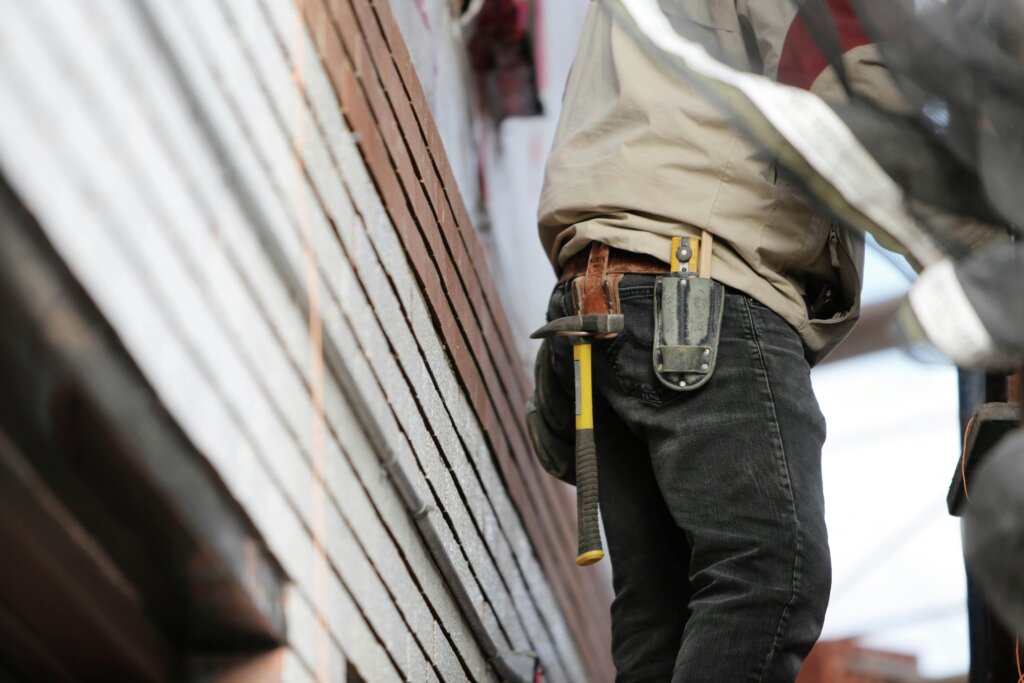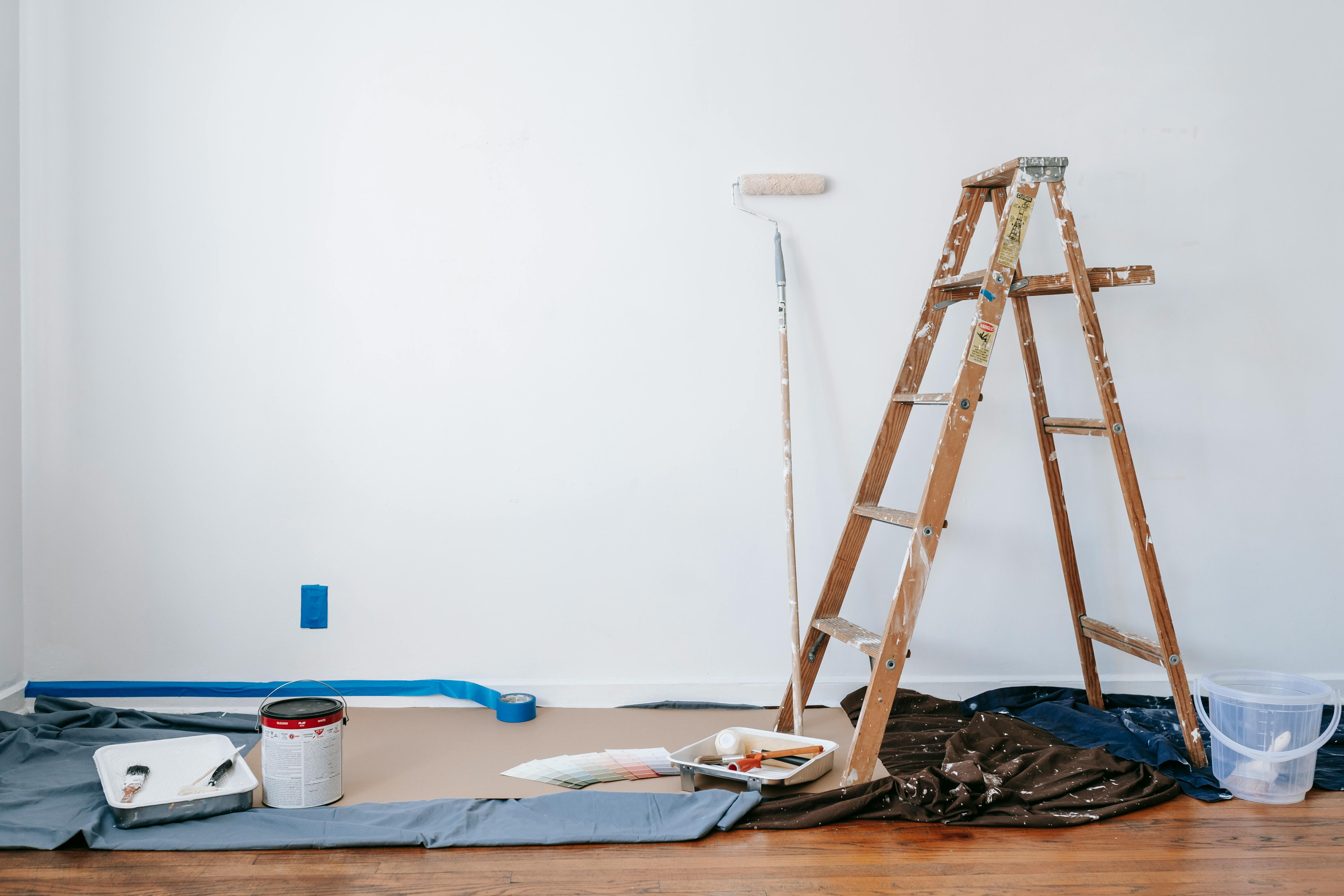Lender-required repairs are a crucial element of real estate transactions, ensuring that a home is structurally sound before being sold to another homeowner.
However, significant repairs to fix major code violations can cost thousands of dollars, making it hard to get financing from conventional lenders.
In this article, we will explain the role of lender-required repairs and what to do if a deal falls through because of mandatory repairs.
What Are Lender Required Repairs?
Lenders require that a home be free of safety concerns before they approve a buyer’s loan, as this ensures that the buyer is not paying for a home that is not suitable for habitation.
These necessary repairs are usually uncovered during a home inspection, which a loan company will require before lender approval of a mortgage. Common repairs required include fixing plumbing problems, roof replacement, and rectifying faulty wiring.
While those using conventional loans may also have required repair obligations, government-backed loans, such as FHA loans and VA loans, have different requirements. Repairs needed for FHA loans are often structural problems, peeling paint, lead-based paint hazards, and pest infestations.
With VA loans, there will be appraisal required repairs. A VA appraiser will provide an appraisal report that assesses structural soundness and safety concerns, and the home sale may not be approved if these are not fixed.
Appraisal reports play a significant role in the home’s market value; specific repairs can allow potential buyers more negotiating power in the real estate transaction or even allow them to back out of sales process without losing their earnest money deposit. If lender-required repairs are not completed, then the financial institution may refuse to issue a mortgage loan.
Examples of Lender Required Repairs

Lender-required repairs can vary significantly depending on the mortgage issuer, but certain repairs are a must for most every lender.
Structural Problems
Foundation problems, damaged roofing, and unstable load-bearing walls are all examples of structural damage that must be rectified for the safety of inhabitants.
Water Heater Problems
A broken water heater can be incredibly dangerous, possibly leading to a gas leak or even an explosion.
Peeling Paint
These lender-required repairs are especially significant for older homes, which may contain lead paint.
Code Violations
Broken windows, improperly supported plumbing, overgrown grass, and missing smoke detectors are common violations that require repairs before selling.
Infestations
Any mold, insect, or rodent infestations must be dealt with immediately, as they can lead to issues with air quality, communicable diseases, and even structural damage.
Gutters and Roofing
Gutters shouldn’t be clogged or overgrown with weeds, and the roof should have all its shingles to prevent water damage.
HVAC Systems
A malfunctioning HVAC system is not just uncomfortable but potentially dangerous, making it one of the most common lender-required repairs.
Crawl Spaces
A crawl space should be waterproof, insulated, and ventilated. A leaky crawlspace can allow water intrusion into the foundation, causing greater issues down the line.
What Happens When a Lender Requires Repairs
Conventional lenders tend to be strict about required repairs because if the buyer defaults due to high repair costs down the line, they will lose money. Additionally, they want to ensure that the sales price matches the home’s actual value, as they are otherwise lending more money than is necessary.
To protect themselves from default, they may demand a different contract price or expect the buyer to pay higher closing costs.
A real estate agent plays a critical role in lender-required repairs. They will help to mediate between the buyer, seller, and lender to ensure a smooth transaction, which can include negotiating who should pay for repairs.
Additionally, they’ll guide the buyer through the implications of certain repairs, advising them on whether it’s possible to back out of the deal because of these newly found issues.
Who Pays For Lender-Required Repairs?

Neither the seller nor the buyer has explicit repair responsibilities; instead, they will engage in repair negotiations, and it’s possible for each of them to pay part of the repairs.
The current market will influence who has more bargaining power. In a seller’s market, where there aren’t many options for buyers, it’s more common that the buyer pays for repairs. On the other hand, the seller pays when it’s a buyer’s market and the seller is motivated to ensure the deal goes through.
Earnest money and the market value will also influence who is obligated to pay for lender-required repairs. A higher earnest money deposit will encourage the buyer to pay, as if the buyer fails to purchase the home, they can lose out on thousands of dollars.
At the same time, if these repairs will significantly drop the home’s value, the buyer can demand a lower sale price.
Lastly, if the seller chooses to work with a cash buyer instead of a potential homeowner, they won’t need to make any lender-required repairs. Cash buyers like A-List Properties purchase homes, providing a fair cash offer based on the home’s condition. They will then take on all the burdens of repairs on behalf of the seller.
Can You Avoid Lender-Required Repairs?
It is possible to avoid lender-required repairs, but you must carefully weigh your options before making a decision.
Factors to Consider
Impact on Home Value – If lender-required repairs will boost the home’s value beyond the estimated repair costs, then it is worth it to perform the necessary repairs. Otherwise, you may be better off selling to cash home buyers.
Current Market Conditions – What type of market you’re in can dictate whether it makes sense to complete repairs. In a seller’s market, buyers will be more motivated to take on the burden of repairs to access traditional mortgages, but when buyers are in more control, you may choose to get a cash offer instead.
Viability of Other Options – If no credit unions or banks will issue a mortgage for the property, and the lender-required repairs are far too expensive to undertake, selling the house as-is to cash home buyers or real estate investors like A-List Properties could be a more prudent choice.
Alternative Financing Options
As every lender will make their own decision about what repairs are necessary, it’s possible to seek buyers using more lenient loan options, like a VA or FHA loan.
These lenders will focus on more immediate health and safety concerns rather than cosmetic needs, and so they may require fewer repairs.
Ability to Manage Repairs
You must also decide whether you’re capable of taking on lender-required repairs from a financial, legal, and time perspective.
When the lender requires repairs but you’re on a very short selling deadline, you may get a better deal from a cash home buyer, who won’t require anything to be done to the home before you sell.
Do You Need to Make The Lender-Required Repairs?
Whether you’re obligated to make lender-required repairs depends on what you have negotiated with the buyer and what type of home sale you have selected.
In general, the financial institution does not care which party completes the repairs, only that they are finished by the time that the real estate transaction is complete and the mortgage loan is issued.
If you haven’t been able to negotiate out of making some or all of the repairs, you must decide whether the cost is worth the potential windfall from the sale.
Weighing the Cost vs. Long Term Goals
When deciding whether to make lender-required repairs in real estate transactions, you must consider how the cost of repairs will factor into your long-term goals.
Completing these upgrades can greatly enhance the market value, as well as the marketability. Most buyers want a home that is move-in ready, and they may pass on a property that needs significant upgrades, so getting these done right after the home inspection will enable a smoother transaction and faster sale.
On the other hand, getting contractors in to fix things can be a time-consuming and costly process that may not pay off with a higher sale price. If you’re on a tight deadline, such as needing to move out of Texas for work, you might have to pay for your move without the home sale proceeds and coordinate the repairs from out of state.
Nature of the Repairs
The nature of the lender-required repairs should also play a major role in whether you decide to take them on. Small cosmetic issues, like stripping the walls and putting on a new coat of paint, can be easily fixed, while larger structural issues, such as a cracked foundation, will cost you thousands.
You must assess your financial ability to make these fixes, especially if you were not able to negotiate so that the buyer will pay for most or all of them. If they are too extensive for you to finance, then it may be best to seek real estate transactions outside of the traditional home market.
Alternative Solutions
It’s possible to sell your house as-is to a cash buyer or real estate investor. Cash buyers like A-List Properties take on all the burden of renovations on your behalf, and we do not require inspections before the sale.
This can be incredibly advantageous if your home has significant problems, like severe water damage or a termite infestation, as these could cost you thousands before you can even list your home.
Additionally, we’ll clean out the property for you; there are no open houses required. Cash home sales are a great option if you are on a tight deadline and don’t have time to fix up the property before leaving.
Conclusion
Lender-required repairs can represent a significant roadblock in the home-selling process, so it’s crucial to understand what may be required before you can close the deal.
You should align your responsibilities with your long-term financial stability and overall goals in selling your property. This includes looking at Texas market conditions, living costs, and the expenses involved in the specific lender-required repairs.
Real estate professionals can be an excellent resource to identify whether it’s worth it to make the repairs. As a trustworthy and transparent cash buyer, you can always contact A-List Properties to learn more about your options; we’ll let you know whether we believe a cash home sale is worth it for you and offer you expert tips on how to complete any real estate sale, even if you don’t choose to use our services.

Zach Shelley
Zach Shelley is a seasoned real estate investor with a diverse network spanning across the nation. As the founder of his own real estate venture, Zach is committed to offering innovative solutions to homeowners facing various real estate challenges.. Through his dedication and strategic approach, Zach continues to make a significant impact in the real estate industry, providing homeowners with alternative pathways to navigate their property transactions.



